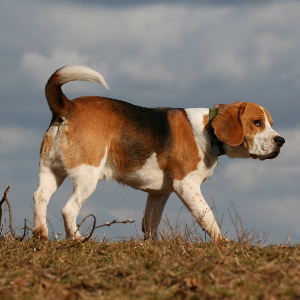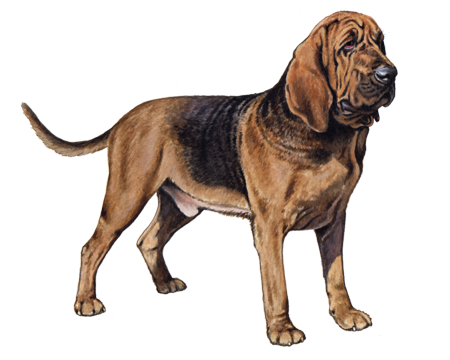
Harrier
Harriers are known to be social and friendly towards people. And because they descend from a group of working pack dogs, they tend to get along well with other canines, too.
Interested in discovering if your dog is a Harrier?
Check out Wisdom Panel's DNA tests.

Harrier Traits
General Appearance
Harriers are sturdy and large-boned. They have short coats and floppy, low-set ears.
Coat and Colouring
The Harrier's coat is short and dense, and the texture around the ears is finer than that on other parts of the body. The breed can be any color. But combinations of black, white, and tan, lemon and white, and red and white are most common.
Distinctive Physical Traits
Harriers look very similar to Beagles and other breeds in the hound group. Sturdy dogs, they have large bones and an unwavering ability to hunt.
Harrier Temperament
Harriers are intelligent, social, friendly, and people-oriented. As such, they don't like to be left alone for long and may get into trouble when they're bored or lonely.
The Harrier's instinct to hunt trumps all else. So, early training is essential. And you should always keep your Harrier leashed or in a secure area when they are outside. Also, keep in mind that these dogs tend to dig.
Fun fact: This breed can be quite chatty—Harriers have a distinctive "singing" voice.


Harrier History
The Harrier's history dates back to 1260. But the breed really gained notoriety in 1891—when the Association of Masters of Harriers and Beagles formed. Back then, Harriers were more popular than Beagles. (Studbooks from that time list approximately 107 registered packs of Harriers.)
To create the Harrier, breeders crossed small Foxhounds with Beagles. And the word "harrier" initially described the size of the hounds and type of hunting they performed, rather than any specific pedigree.
Experts debate when Harriers came to the United States—where organized packs participated in English-style hunting. But some historical texts mention the breed being shipped to America in the 18th century.
Harrier Care
Nutrition
Harriers require a high-quality diet suited to their particular age, activity level, and size—as well as any additional health concerns. This breed loves food and may beg for more. So, it's important to monitor how much your Harrier eats and reduce portions and treats as necessary. Your veterinarian should also be able to help you determine appropriate nutrition and feeding guidelines.
Grooming
True to their hound roots, Harriers have short, glossy coats that require very little maintenance. Brushing once a week with a grooming mitt or soft-bristle brush should help keep loose hair at bay.
Trimming nails, cleaning ears, and brushing teeth should also be part of every dog's grooming routine, regardless of breed.
Exercise
As hounds, Harriers were bred for long hours of hunting in rigorous conditions. That means they're active and energetic dogs and require a lot of daily exercise to stay happy and healthy. Without it, they may become bored, which can lead to destructive behaviors.
Because of their hunting background, Harriers excel at canine sports—such as tracking and coursing. But this breed will always follow its nose. So, be sure to limit outdoor activities to a secure, fenced area (or use a leash).
Training
Though loveable and friendly, the Harrier also has the quintessential stubborn streak of a hound. You'll need patience and consistency to train this breed. Reward-based training techniques can also help.
Breed Group
Hound
The most common ancestral trait of this group is being used for hunting. Some use acute powers of scent to follow a trail while others demonstrate the gift of stamina as they run down a quarry. Beyond these two common traits, however, generalizations about hounds are hard to come by as the group is comprised of a very diverse lot of breeds.


































